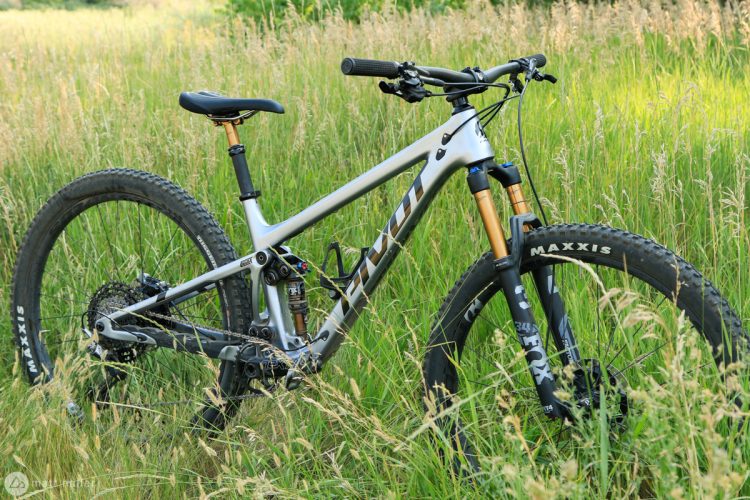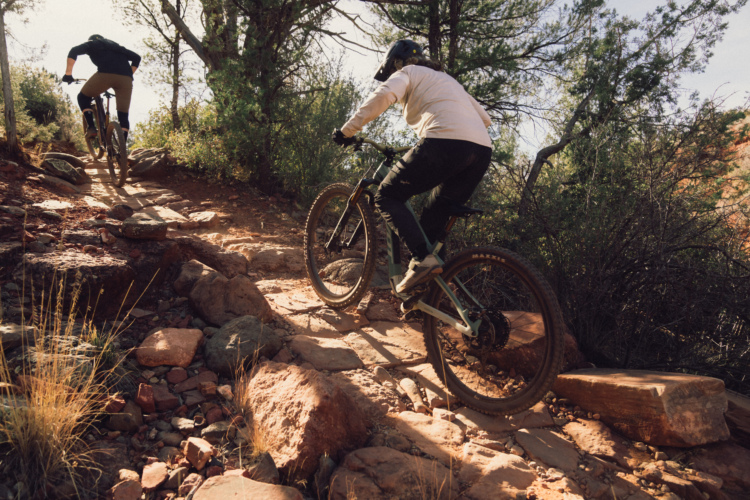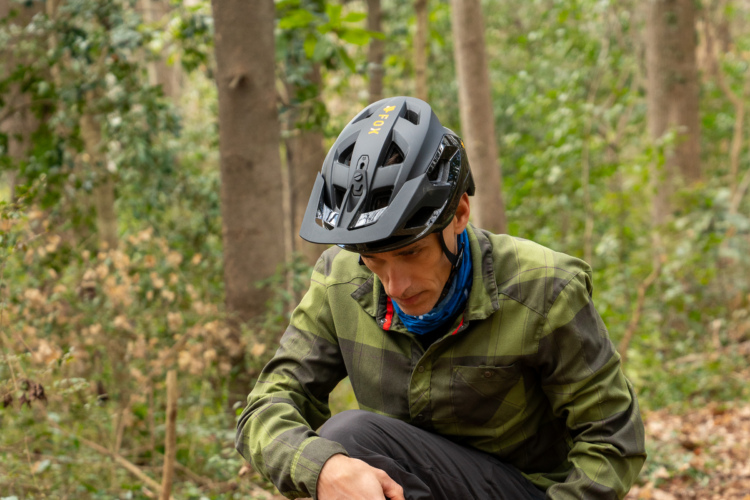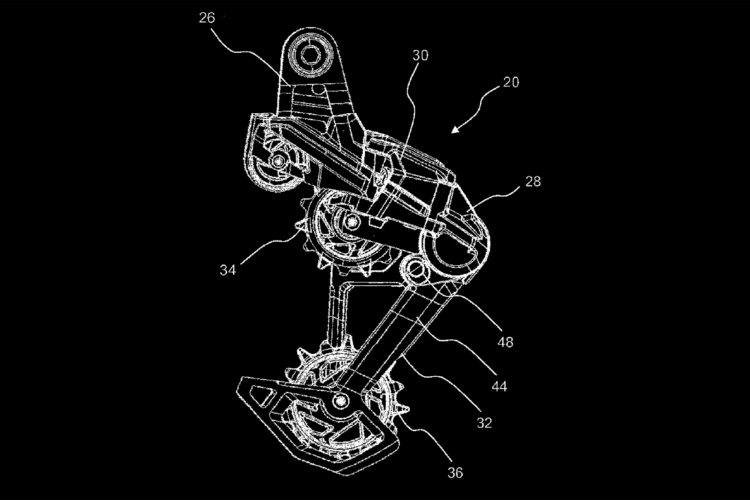

The Pivot Trailcat is a new bike in name and frame, though it’s really two different animals. The Trailcat SL, with 140/120mm of suspension travel front/rear is lightweight. It’s short travel. A downcountry bike, if you will.
The 150/135mm Pivot Trailcat LT has longer travel. It weighs about a pound more. It leans all-mountain, sorta like a 29er Shadowcat. Or a mini Switchblade.
I spoke with Patrick Ribera-McKay, Product Marketing Specialist for Pivot, to learn about the new Trailcat, which is set to replace the Trail 429. Though the Trailcat spec doesn’t break a lot of new ground, it’s the perfect example of what a trail bike should look like in 2025 with adaptable and progressive geo, size-specific chainstays, a focus on lighter weights, in-frame storage that doesn’t suck, and free lifetime replacement bearings.
Adaptable geo that’s generally longer, lower, and slacker still
Like the Pivot Trail 429 it’s replacing, the Trailcat frame features a two-position flip chip. Looking at the press materials, the geo chart starts with the low position, which suggests this is the bike’s intended stance. If so, that would be a change from the Trail 429, which leads with the high position measurements. This is a minor detail, and it’s possible I’m reading too much into this, but to me it suggests a shifted perspective on the brand’s short- to mid-travel trail bike offering.

It’s not possible to make direct geometry comparisons between the old Trail 429 with a 130mm fork and the Trailcat SL with a 140mm fork. Pivot did offer a limited “enduro” version of the Trail 429 with a longer, 140mm fork for a time, and the team was surprised at how well it sold. “It turns out that ended up being nearly 50% of the sales of the Trail 429,” Ribera-McKay told me.
With the flip chip in the lower setting, the Trailcat SL’s 65.8° head tube angle is slacker than the Trail 429 by 0.2°, while the reach on a size large is a full 10mm longer at 480mm. The bottom bracket height is lower by 3mm. While these geometry shifts aren’t as dramatic as those we’ve seen in past seasons, as the Trailcat shows, trail bikes continue to get a little longer, lower, and slacker.

The Pivot Trailcat LT shows a bigger departure from the Trail 429, with the geometry more closely aligned with the longer-travel, year-old Switchblade V3. The headtube angles are within 0.1° of one another, while the Trailcat LT bottom bracket height is a full 5mm lower than the Switchblade. The Trailcat LT has a 5mm shorter reach than the Switchblade for size large frames, though it should be noted the Switchblade and Trailcat SL actually bikes have the same reach.
The flip chip on the Trailcat allows buyers to adjust the geometry to suit their riding style or terrain, or to run a mixed-wheel setup with a 27.5″ wheel in the rear. Pivot isn’t offering any mixed-wheel builds out of the gate, so interested consumers will need to purchase a 27.5″ rear wheel separately.
Though the Pivot Trailcat SL and LT share the same frame, similar to the latest Ibis Ripley and Ripmo bikes, they are sold as two separate bikes. In addition to using different suspension components, the bikes utilize unique upper links that are not swappable.
“We are not going to offer links and the ability to switch it,” Ribera-McKay said. “We use permanent Loctite, and according to my guys in the QC [department], they’re using a breaker bar with a 5mm Allen bit, and it still pops. It is not something that we are intending a consumer to be able to do, so it is permanently mounted.”
The Pivot Trailcat features the same proven DW-Link suspension design featured on the Trail 429, Shadowcat, Switchblade, and other mountain bikes in the Pivot line.

Size-specific chainstays
Size-specific aka proportional chainstays are becoming more common, and Pivot was an early adopter in 2022 with the Shuttle SL. Both the Trailcat SL and LT feature chainstay lengths that grow between size medium, large, and XL frames, from about 431mm to 435mm in the low flip chip position.
The Trailcat SL and LT trail bikes are available in five sizes, ranging from XS to XL, and all sizes ship with matched 29″ wheels. The 27.5″ Shadowcat isn’t going anywhere for those who prefer the smaller wheel size, and tall riders will be stoked to see the Trailcat available in a size XL, a size that’s not available for the Shadowcat.

Trail bikes are getting lighter 🤞
Last year I wrote that trail bikes are getting too heavy, and the new Pivot Trailcat bikes make a serious effort to reign things in thanks to frame improvements and a keen eye toward weight for the parts spec. Ribera-McKay says a size medium Trailcat SL Team XTR build ($9,299 MSRP) weighs about 27lb, while a similarly specced Trailcat LT weighs about a pound more, at 28lb. That’s pretty impressive given that the 30lb mark is a goal that seemingly fewer and fewer bikes are able to beat, even short-travel ones.


Frame improvements
Over the past several seasons, in-frame storage has gone from finnicky gimmick to must-have for many mountain bike buyers. Pivot is pretty stoked with their fairly new system, saying the “Toolshed” door on the Trailcat “is a work of engineering art with the easiest to use and most secure latching system on the market.” It’s not clear how the Pivot design is different from others on the market, or if it is truly the easiest to use or most secure, though we’re told a lot of effort has gone toward ensuring that it doesn’t compromise the ride feel or the durability of the frame.
Pivot has developed a clip system to make internal cable and hose routing easier and hopefully rattle-free. The clips inside the downtube can be accessed via the Toolshed door. The clip system, along with redesigned cable ports at the head tube, are said to make running brakes “moto style” a simpler affair. New port covers also promise a cleaner look for those running a wireless drivetrain and/or dropper post.
Lifetime replacement pivot bearings
With the launch of the Trailcat, Pivot is giving away, well, pivot bearings. Similar to the Santa Cruz program, Pivot bike owners as of January 1, 2024 will be able to request replacement suspension pivot bearings for the life of the bike. Full details about the Courtesy Bearing Replacement program can be found on the Pivot website.
New colors, but no black or blue
Judging by my local trailhead, black mountain bike frames are surely the best sellers, but let’s face it, they’re also boring. For the Trailcat launch, Pivot is offering two signature colors — Dr. Purple and Green Meadow Mist — but no black or whatever shade of blue Pivot is calling Pivot blue this year.

Will there be affordable builds available?
Pivot Trailcat SL and LT builds are priced from $5,999 to $13,299. While some larger bike brands offer carbon builds priced under $4,000, Pivot has traditionally held to high and higher-end builds.
“Our most popular build of our three is our Pro build,” Ribera-McKay told me of the mid-tier spec, which for the Trailcat is priced between $7,499 and $8,699. “Historically, that has always been the highest selling build regardless of model in our lineup. Our customer values that build, and so we haven’t had a big need to go into those lower price points. And oftentimes we’re just not competitive when we try to do stuff like that.”
Buyers can choose builds with various Shimano and SRAM drivetrain options, and all builds feature Fox suspension components, including at least a couple with Neo Live electronic suspension tech. No RockShox suspension builds are available.
More information about the Pivot Trailcat SL and LT can be found on the Pivot website.










0 Comments